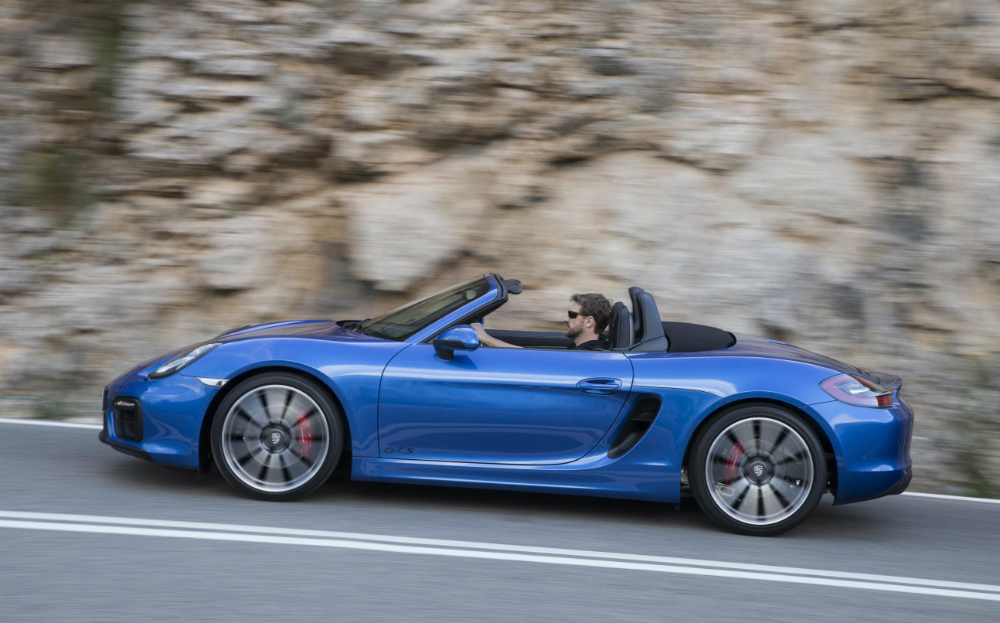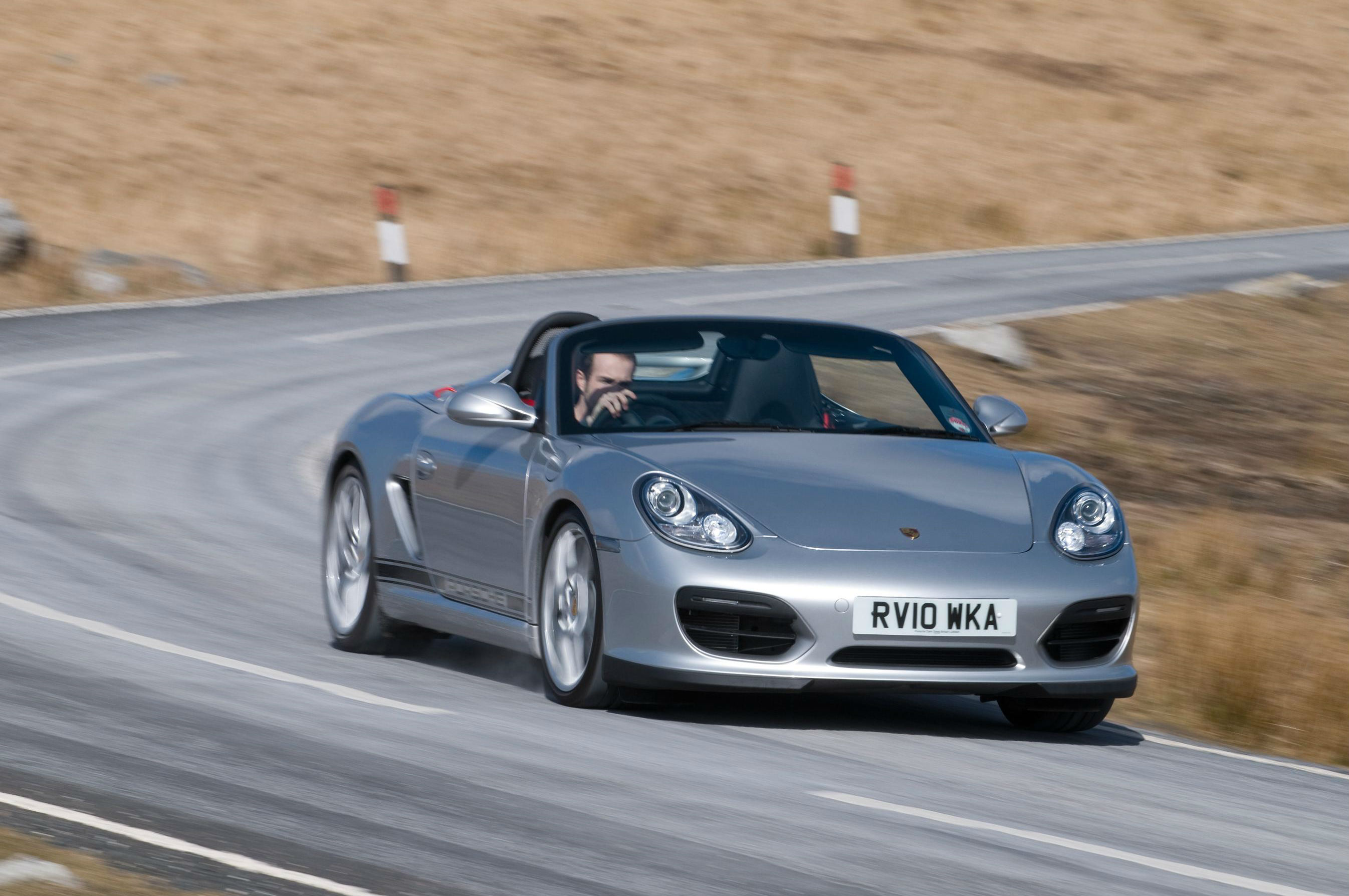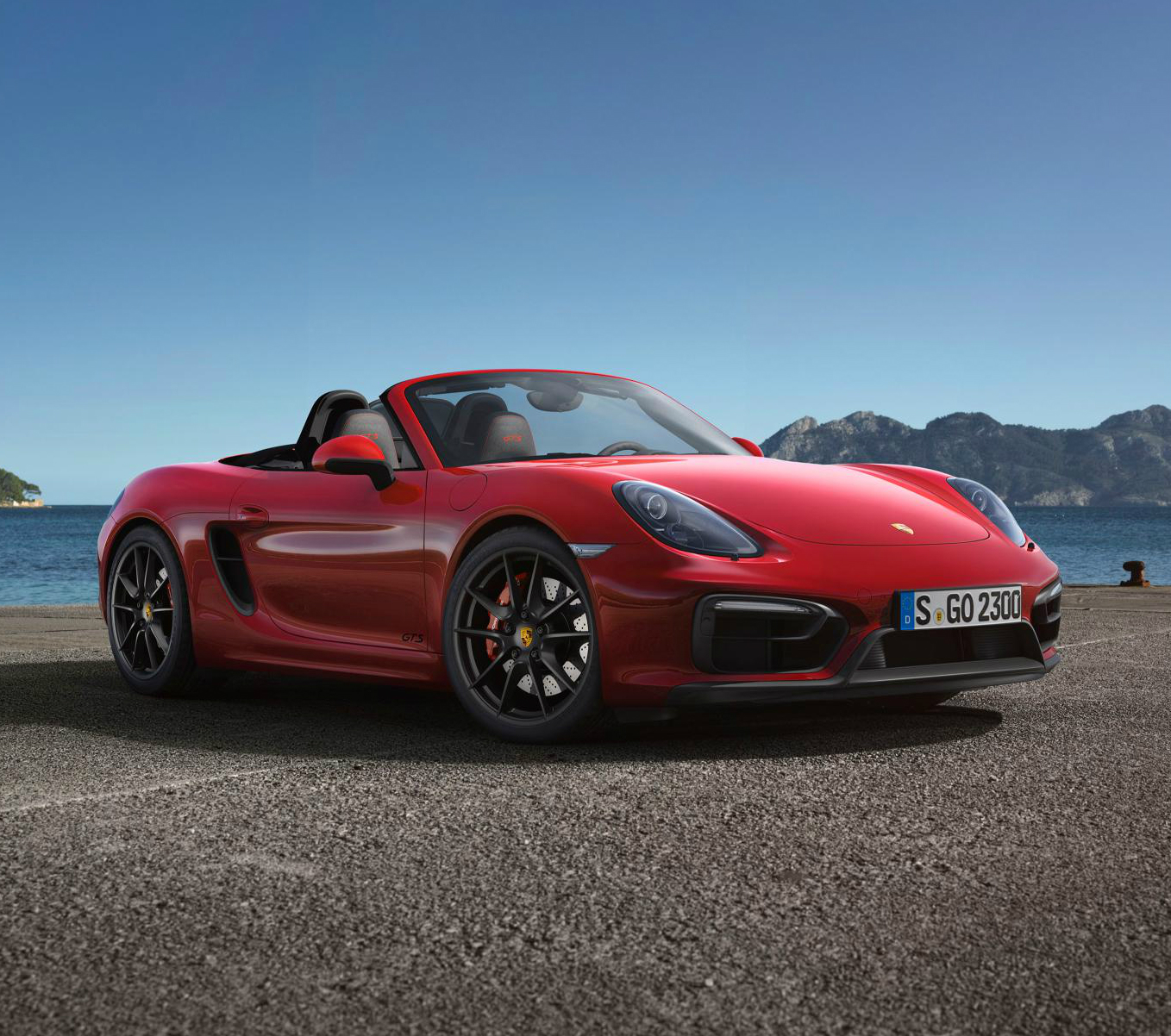Buying Guide: Porsche Boxster 986, 987 and 981 models
Is a second hand Boxster the bargain it appears to be?

THE NEW Porsche 718 Boxster is a landmark in the history of Porsche’s roadster. Sweaty-palmed purists have barely got used to the idea of the 911 Carrera having a turbocharged motor and now they’re faced with a Boxster with a four cylinder turbo. It’s a seismic moment that will throw fresh attention on the armada of used, “old school” Boxsters in the classifieds.
Today, you can have pretty much any Boxster you want for whatever price you want to pay, but which are the best used buys?
Compared with its big brother, the 911, the Boxster has always had something of an identity crisis and few cars have been so unfairly derided. It’s been called everything from the Coxster (thank you Clarkson) to a hairdresser’s special. In many people’s eyes, its the equivalent of playing football in the Championship – your career hasn’t turned out quite as well as you hoped.
View the Porsche Boxsters for sale on driving.co.uk
Some of this dates back to the car’s conception. Back in ’96, Porsche was strapped for cash and needed to create two cars for the price of one. Alongside a new 911 (codename 996) came the Boxster. Bumper aside, it shared its front-end with the 996, but it’s derriere was very different. A flat six engine was present and correct, but it sat in the middle of the car, not at the rear as it is on a 911.
The purists shrieked in horror, but missed a crucial point. The original 911 was only ever rear-engined for reasons of packaging, not philosophy. If you were starting from scratch, you’d put the engine in the middle, just as it is on a single-seater racing car. In terms of physics, the Boxster has always had a key advantage over its more illustrious sibling.
For all its alleged image problems, there’s also no denying that it has been a commercial success, which means for the used car buyer, there’s no end of choice. Picking the right one is tricky, so we enlisted the help of investment analyst Robert Newman from Motorscout and classic car expert and independent Porsche specialist, Peter Bedford, from Surrey-based GT One Porsche, to filter out the best Boxsters.
Porsche Boxster ‘986’ (1996–2004)

- The one to buy: 2.7-litre five-speed manual
- What it will cost: Between £3,000 – £15,000
- Predicted price movement in next five years: Little change – innate value but a write-off if anything significant goes wrong
- We found for sale: 2001 Porsche Boxster 2.7 manual
The original Boxster had a 2.5-liter ‘flat’ six-cylinder engine – which means the pistons pushed out in horizontally opposed directions – and a relatively paltry 201bhp. Today, the oldest models can be picked from as little as £3500, which at first glance seems like a bargain, but it’s very much a case of buyer beware.
“If anything significant goes wrong, such as the gearbox, the car will effectively be a write-off,” explains Robert Newman of Motorscout. “You can easily spend more than £5k getting it fixed.”
The same can also be true of the more desirable 2.7-litre, 228bhp cars, which arrived in 2000, or even the much faster 3.2-litre, 249bhp Boxster S of the same era.
“At this price, there is an element of risk,” says Peter Bedford of GT One Porsche, “but as an entry level Porsche it’s not a bad car. Consumables such as tyres and brakes aren’t too expensive and there are plenty of third party suppliers who offer good quality parts as a fraction of the official Porsche prices.
“As long as it’s not a complete wreck, the car will also always have an inherent value – it’s not going to depreciate to zero like a Ford Focus would.”
“The Boxster changed perceptions that Porsche’s don’t depreciate early.”
Servicing costs for a Boxster should be relatively affordable. A minor service is around £250, followed 12 months later by an intermediate service at around £350-375. The next year, a major service would be expected at a cost of approximately £600, followed the next year by another minor service. This four yearly cycle then repeats.
Although the later ‘S’ models are the enthusiast’s choice, the 2.7 will be cheaper to run and the five-speed gearbox is said to be less troublesome than the six-speeder in the ‘S’. It’s important to check for wear on the fabric hood and worth remembering that until the 2002 Model Year, the Boxster had a plastic rear window. The latter can be replaced, but convertible specialists charge nearly £480 to do the job.
The engine is the biggest weak spot of these early Boxsters, just as it is in the 911 of the same era. The bearing on the rear of the intermediate shaft, which transfers drive from the crankshaft to the camshafts can fail. Fixing it requires an engine rebuild so the car could effectively be classed as scrap should the problem arise. The cracking cylinder head problems that afflicted so many 911s of this era are less of a problem in the smaller-engined Boxster, but not unheard of.
At this entry-level price you really get what you pay for. “The Boxster changed perceptions that Porsche’s don’t depreciate early,” says Newman. There were lots built and they don’t appeal to the cognoscenti, which keeps the prices low. But that also means they can be a good option if you just want to enjoy driving and not worry too much about the car as an investment.”
Porsche Boxster ‘987’ (2004-2012)

- The one to buy: Spyder
- What it will cost: Between £10,000 – £50,000
- Predicted price movement in next five years: Spyder represents a good investment, at a price; standard Boxster’s values likely to remain stable or drift downwards
- We found for sale: 2010 Porsche Boxster Spyder 3.4 PDK, £35,975
The 987 was a development of the 986 but featured more sophisticated styling, inspired by the Carrera GT, and upgraded engines. The 2.7 now had 237bhp and the 3.2 ‘S’, 276bhp. Two years later these outputs rose to 241bhp and 291bhp respectively, as the ‘S’ engine swelled from 3.2 to 3.4-litres.
In 2009 it was revised again with power rising to 252bhp for the standard car and 304bhp for the ‘S’. For the first time, Porsche’s flappy paddle PDK gearbox, a dual-clutch system, was also made available.
In 2010 Porsche launched the limited edition, lightweight Spyder version, which was the first Boxster to become truly collectible.
“Although it’s mechanically similar to the 986, the 987 was, overall, a much nicer car,” says Bedford. “The interior was a big step forward in terms of quality and the car was also more refined. The generation II car of 2009 introduced a new family of engines and represents good value today. The standard car buzzes along very nicely and the consumables – tyres, brakes, fuel – are all cheaper than the ‘S’ model.”
In 2010 Porsche launched the limited edition, lightweight Spyder version, which was the first Boxster to become truly collectible. “It’s a great car and undervalued,” says Newman. “It has the benefit of exclusivity.” Today, Spyder prices are around £35-50k.
Porsche Boxster ‘981’ (2012–2016)

- The one to buy: GTS
- What it will cost: Between £25,000-£90,000
- Predicted price movement in next five years: Spyder a possible future classic, but standard cars will continue to depreciate in the medium term
- We found for sale: 2014 Boxster GTS manual, £54,899
The outgoing Boxster first appeared in 2012 and boasted styling inspired by both the 991 version of the 911 and the 918 hypercar. The entry-level 2.7 now boasted 261 bhp and the ‘S’, 311 bhp. In 2014, the range was extended with the arrival of the GTS version, which added 15bhp for a total of 326bhp.
Last year, the second generation Spyder was introduced. Boasting 370bhp and less mass than the standard car, it shares many parts with the brilliant Cayman GT4 and is arguably the most desirable Boxster yet made. For now at least, it’s commanding a premium over the list price, with cars offered for sale around £90,000.
The arrival of the turbocharged, four-cylinder 718 Boxster might make the 981 a popular choice for enthusiasts
“The 981 is a good overall package,” reckons Bedford, “but there have been some problems with corrosion around the underbody that did not occur with earlier cars. It will never have the iconic status of some of Porsche’s old air-cooled cars, but it’s a good everyday car that doesn’t need to be locked away to protect its value.”
The arrival of the turbocharged, four-cylinder 718 Boxster might make the 981 a popular choice for enthusiasts who are wedded to the sonorous cry of the flat six-cylinder engine, but Newman reckons its appeal should not be overstated. “As a driver’s car, it’s a great buy, but its lack of kudos relative to a 911 means its values are unlikely to rise significantly in the medium term.”
In other words, you buy a Boxster for the right reasons – not as an investment, but because you want to enjoy one of the world’s most underrated sports cars.




